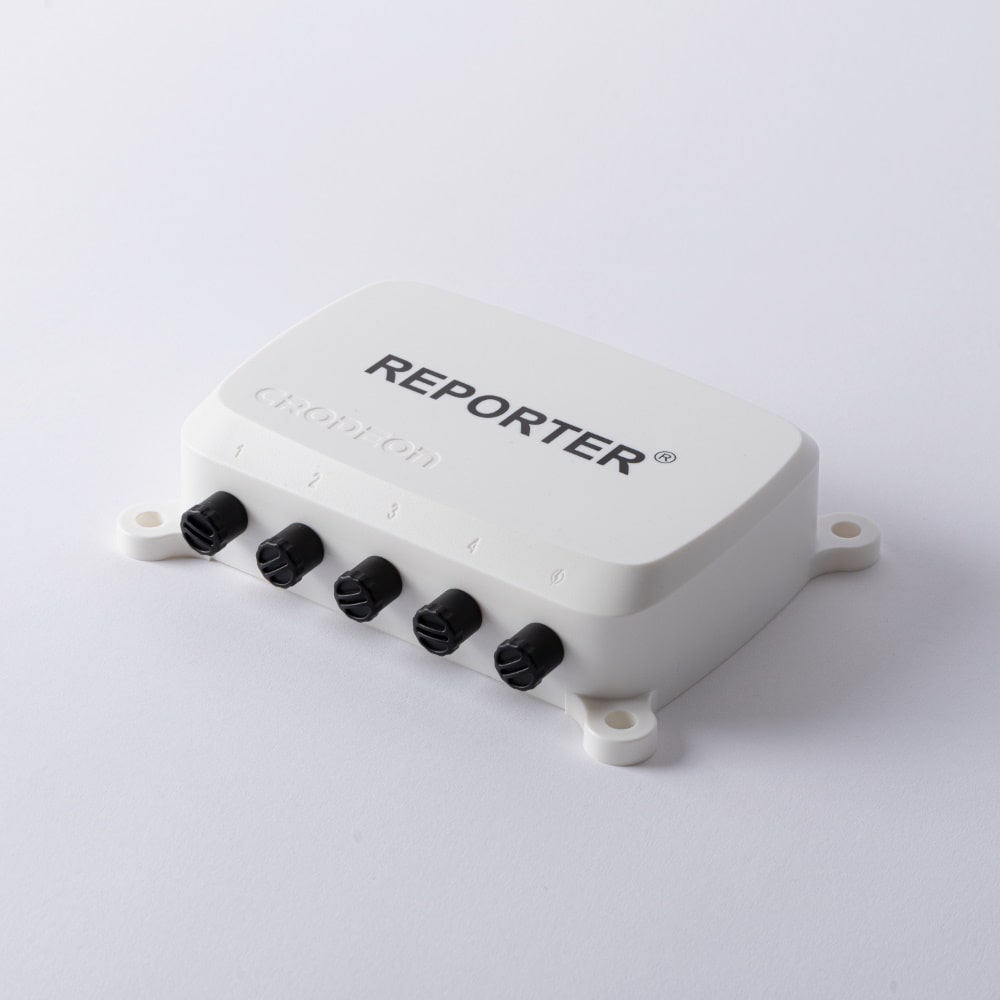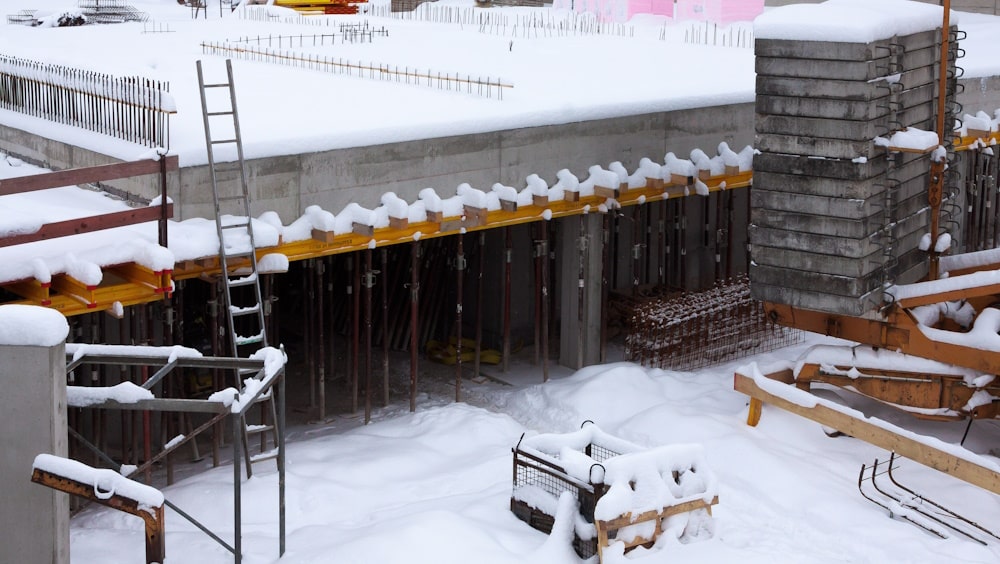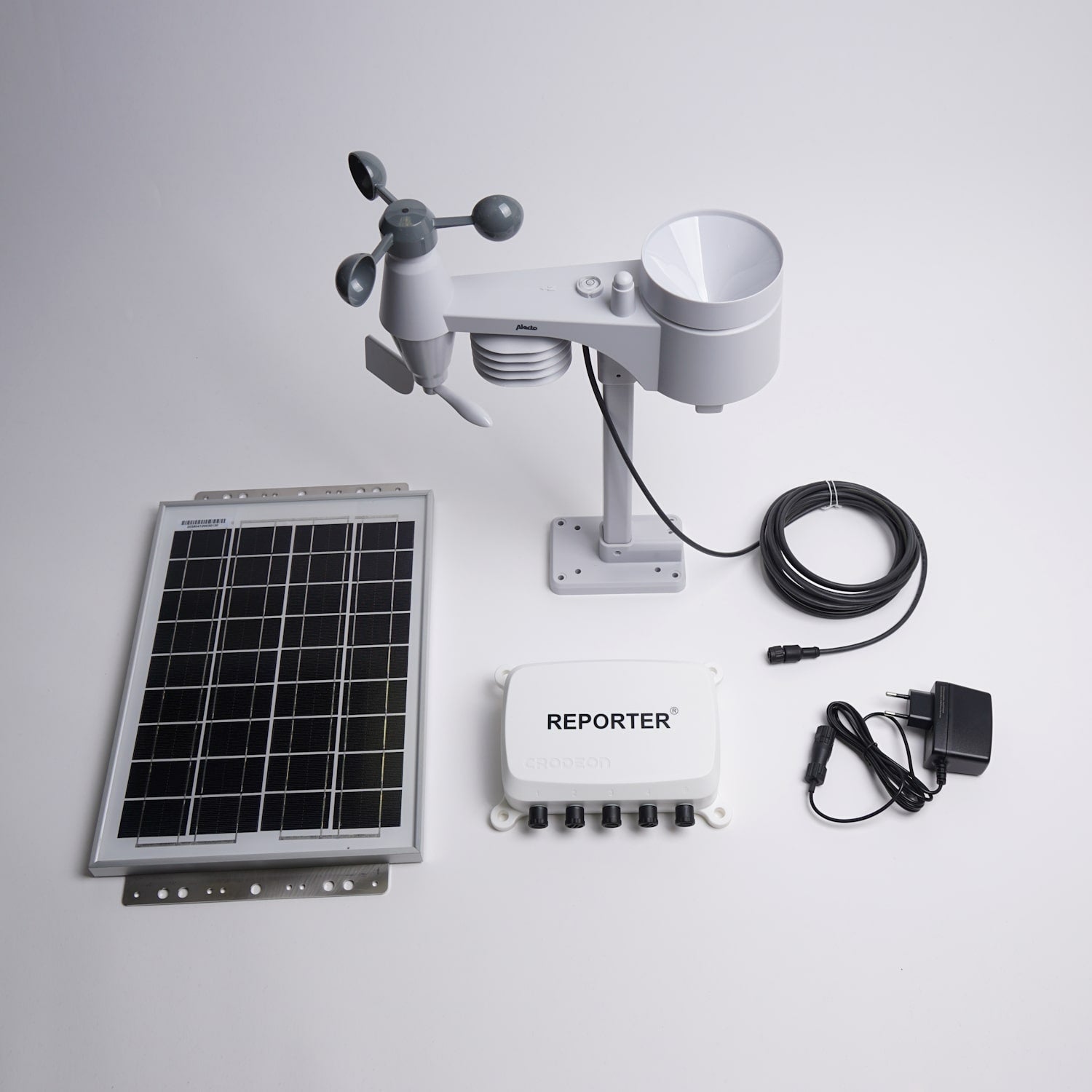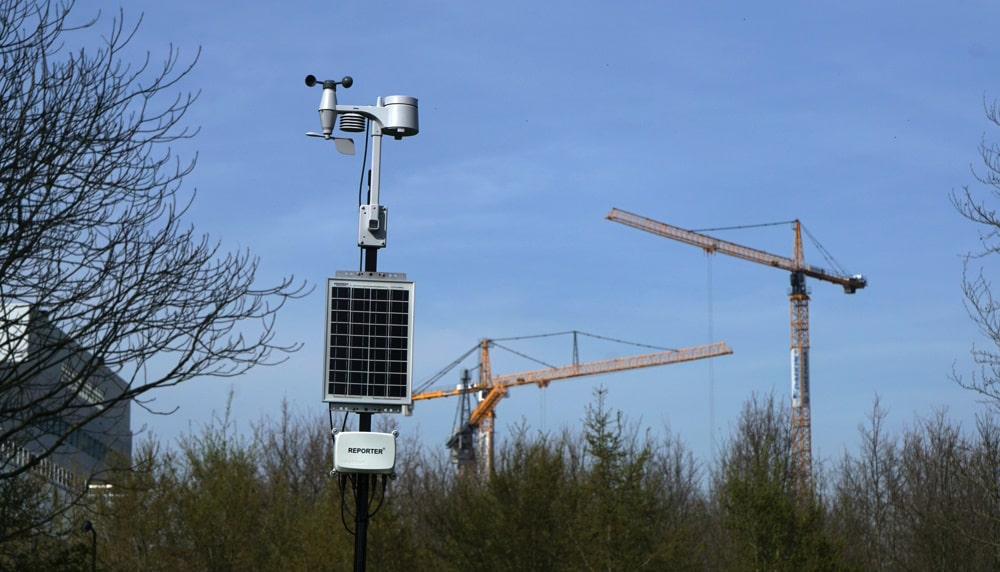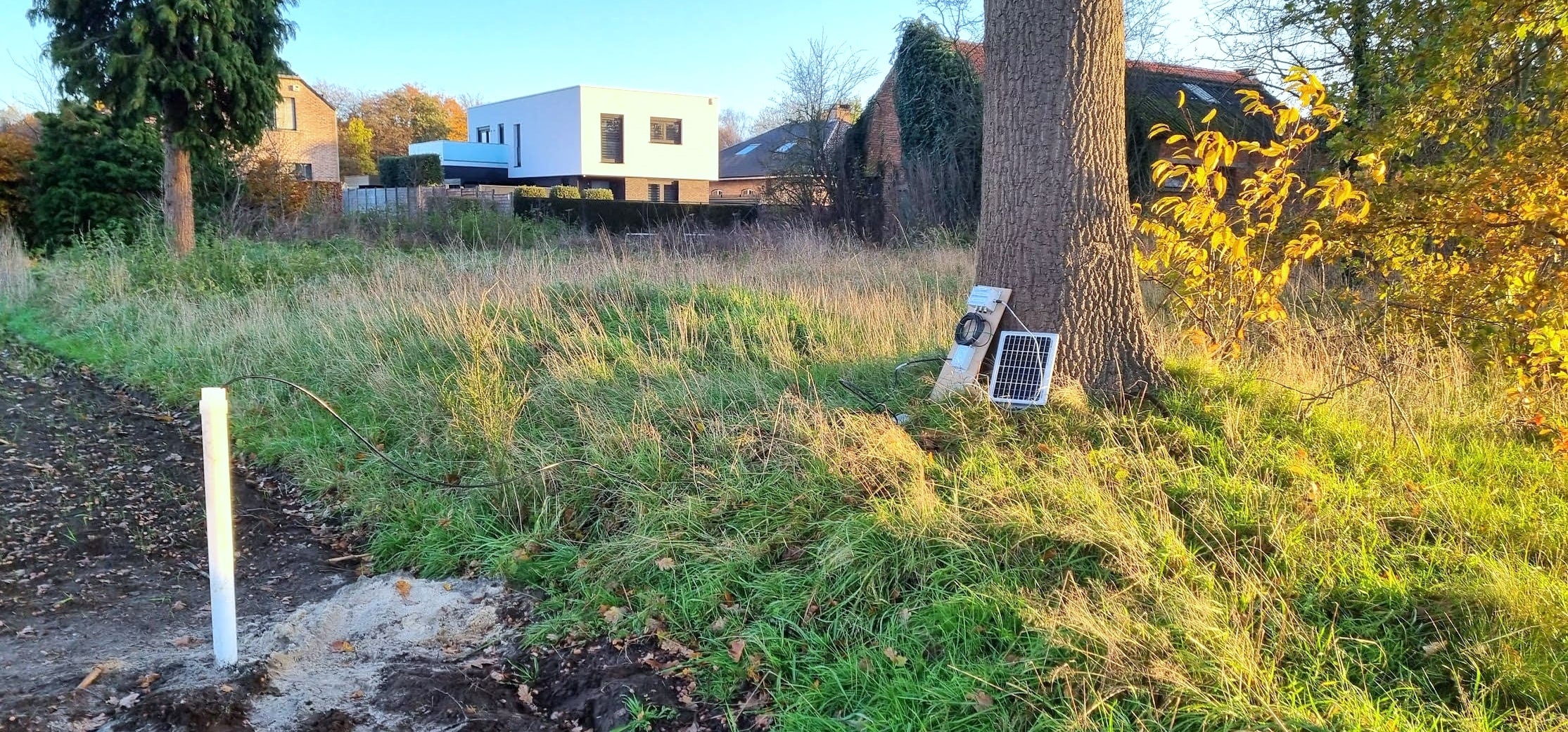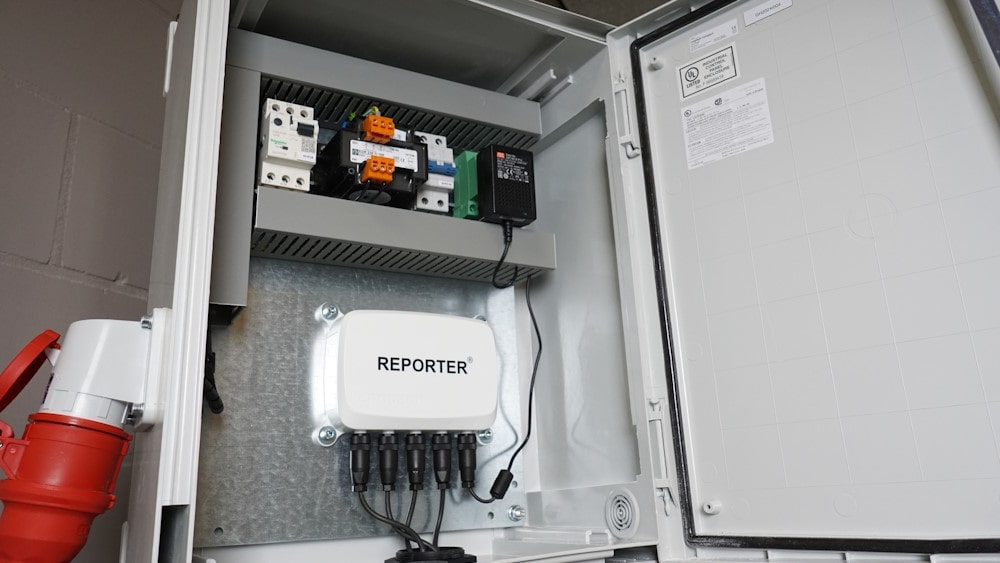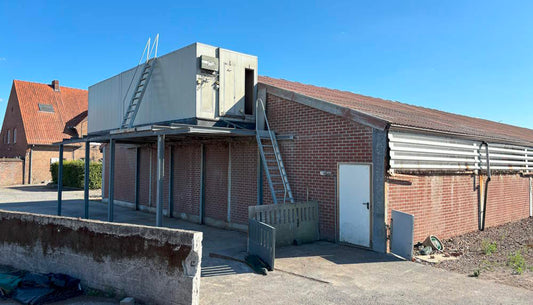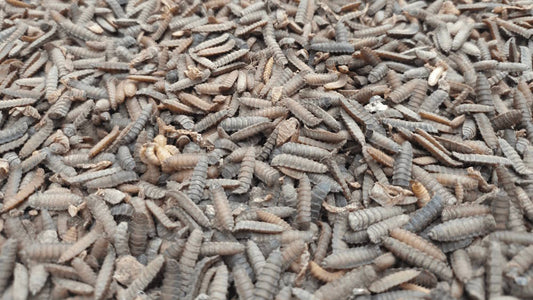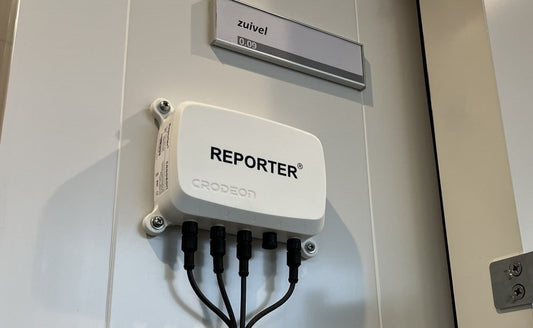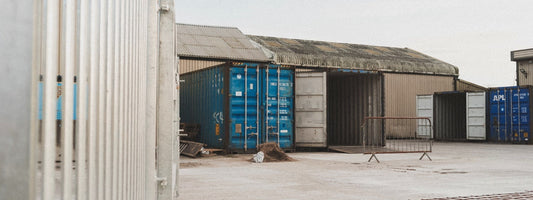Surveillance de chantier – sécurité et efficacité
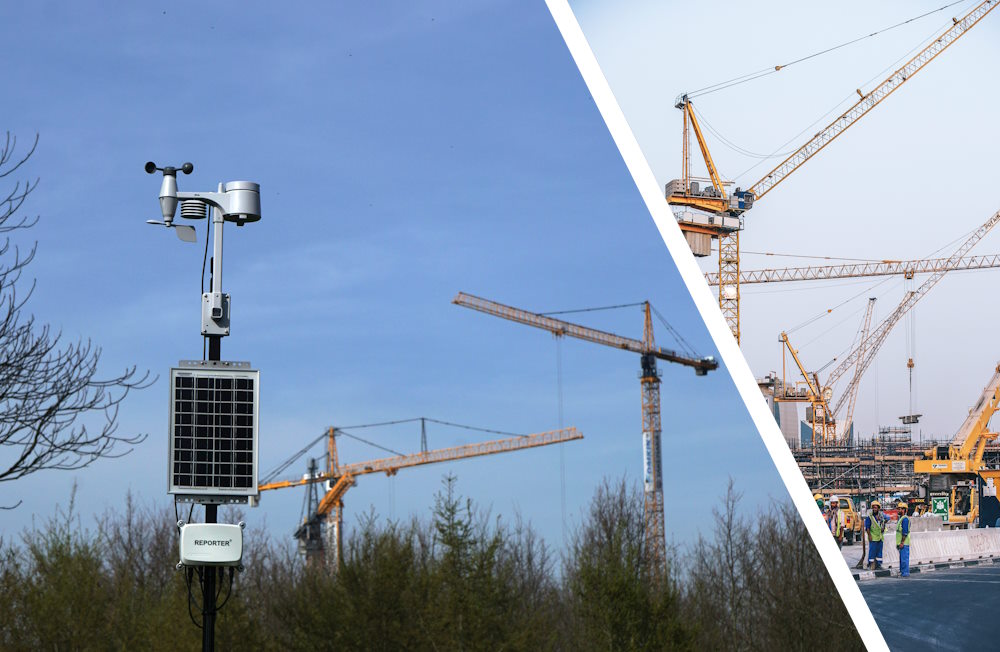
Lorsque les équipes de construction travaillent en extérieur, elles sont confrontées à des conditions météorologiques imprévisibles telles que le gel, la pluie, les tempêtes et la chaleur extrême. La surveillance précise des chantiers de construction fournit des informations cruciales sur les conditions météorologiques, ainsi que sur des paramètres importants comme l'écoulement de l'eau, le mouvement des machines, les temps de durcissement du béton, et bien plus encore.
Lisez la suite pour découvrir pourquoi la surveillance des chantiers de construction n'est pas seulement essentielle – c'est un véritable atout pour votre entreprise de construction.
Les essentiels pour la surveillance des chantiers de construction
Ce dont vous avez besoin pour votre station météorologique de surveillance de chantier :
- Une station météorologique mobile et autonome permettant d'ajouter des capteurs supplémentaires
- Une base stable pour monter le capteur (une grue, une machine, un poteau)
- Des données en temps réel et des notifications d'alarme
- Une source d'alimentation
- Une connexion Internet
Ces deux derniers éléments peuvent poser problème lorsque le chantier se trouve dans un endroit éloigné où aucune connexion Wi-Fi n'a encore été établie et où le réseau électrique n'est pas disponible. Vous avez donc besoin d'un système autonome. Vous avez besoin d'un système qui surveille votre chantier tout en envoyant continuellement des données vers le cloud pour que vous y accédiez, mais qui vous avertit également lorsque quelque chose ne va pas. Même en cas de coupure de courant sur votre chantier.
Reporter comme station météorologique sur votre chantier
Pour des projets de construction à grande échelle, se fier à une prévision météorologique générale peut s'avérer insuffisant. Mettre en place un système dédié à la surveillance météorologique du chantier avec des notifications d'alarme garantit que vous recevez des données précises et spécifiques à votre site. Grâce aux notifications en temps réel, vous pouvez déterminer si le travail peut se poursuivre, rester informé, ajuster les plannings de manière proactive et éviter des retards coûteux.
Reporter est un système mobile, autonome et personnalisable, prêt à l'emploi, qui vous permet de faire tout cela. Reporter est compatible avec l'alimentation du réseau ou son propre panneau solaire. Il dispose de sa propre connexion Internet cellulaire via une carte SIM et peut envoyer des mesures au cloud (Crodeon Dashboard) aussi fréquemment que toutes les 60 secondes.
Accès facile aux données
Reporter rend la collecte de données accessible. Les données de mesure en temps réel peuvent être consultées en direct, soit via le Crodeon Dashboard, soit en intégrant les données dans des systèmes tiers via l'API Crodeon.
Les données historiques peuvent être téléchargées à partir du Dashboard sous forme de fichier csv et ouvertes dans Excel, vous donnant un accès facile à l'exportation de données. Vous pouvez également accéder aux données historiques via l'API.

Comment la surveillance intelligente des chantiers de construction garde un œil sur votre projet
Un système de surveillance à distance permet une surveillance météorologique précise du chantier tout en suivant simultanément d'autres paramètres liés à la construction de votre projet. Cela vous permet de prendre de meilleures décisions en matière de sécurité. La perception humaine n'est pas objective, nous pouvons percevoir un risque comme minimal et continuer à travailler. Pendant ce temps, les données réelles peuvent montrer que le travail ne peut pas être effectué en toute sécurité et doit être interrompu.
C'est pourquoi vous avez besoin d'un système d'enregistrement qui collecte des données en temps réel, comme Reporter. Un capteur météorologique connecté à Reporter devient une station météo instantanée pour les chantiers qui aide à assurer la sécurité de votre personnel. Grâce à la fonction intégrée de notifications d'alarme, vous pouvez recevoir des appels, des messages texte ou des emails pour vous avertir des conditions météorologiques actuelles.
Types de surveillance de chantier
Curieux de savoir comment Reporter peut résoudre vos défis sur le chantier ? Explorons les nombreuses façons dont cet outil puissant peut optimiser vos opérations de chantier.
Surveiller les temps de durcissement du béton
Chaque cm de béton nécessite une semaine pour durcir complètement. En fonction de la température et d'autres facteurs, cela peut être plus rapide ou plus lent. Un capteur de température et d'humidité suit la température ambiante et l'humidité libérée dans l'air. Reporter lit les données du capteur et les envoie à notre plateforme cloud : le Crodeon Dashboard.
En fonction de ces données en direct et enregistrées, vous pouvez déterminer si le béton récemment coulé nécessite encore du temps de durcissement supplémentaire ou s'il est complètement durci.
Jan De Nul et DEME ont utilisé Reporter à cette fin lorsqu'ils ont construit les caissons pour l'île Princess Elisabeth.
Chaleur extrême sur votre chantier
Des températures élevées peuvent entraîner une surchauffe, tant pour vos ouvriers que pour votre équipement. N'oubliez pas que des produits chimiques dangereux pourraient également s'enflammer spontanément.
Une station météorologique sur votre chantier peut surveiller les températures en temps réel. En fonction de ces relevés, vous pouvez décider de reporter les travaux jusqu'à ce que les températures aient baissé et que votre personnel puisse continuer le projet en toute sécurité.
Gel sur le chantier
Les basses températures peuvent entraîner une hypothermie et augmenter les risques de glissade et de chute du personnel. Il est donc important d'éviter que votre personnel ne travaille dans ces conditions.
De plus, il est impossible de couler du béton (fondations) ou de poser des briques lorsqu'il gèle ou qu'il va geler. Le mélange devient impossible lorsque la consistance est trop rigide. Le béton et le mortier ne durcissent qu'à des températures de 5°C et plus. De plus, la maçonnerie fraîche peut se fissurer en gelant, il est essentiel de couvrir et d'isoler les nouveaux murs pour les protéger.
Il serait inutile de se rendre sur place avec ces travaux en tête, pour découvrir que la température est trop basse pour effectuer les travaux prévus. C'est du temps perdu. Tout cela peut être évité en installant une station météo pour chantiers comme Reporter, qui suit les conditions météorologiques actuelles pour vous.

Surveillance des chantiers pour les tempêtes
Les échafaudages, les grues, les échelles et autres constructions temporaires en hauteur doivent être résistants au vent pour ne pas être emportés. Mais même alors, ils ne sont pas à l'abri des tempêtes, et votre personnel non plus s'il continue de travailler dans de telles conditions météorologiques.
Lorsque vous utilisez Reporter comme station météorologique sur votre chantier, il va surveiller et enregistrer la vitesse et la direction du vent. Ces informations supplémentaires sont cruciales, même lorsque vous n'êtes pas physiquement sur place.
Le levage de gros objets par temps venteux est également soumis à des lois strictes, c'est pourquoi Reporter a été utilisé lors de la rénovation du pont Haringvliet aux Pays-Bas.
Surveillance de l'eau sur votre chantier
L'eau est souvent étroitement liée aux travaux de construction. Vous devrez peut-être lancer un projet de drainage pour abaisser le niveau de la nappe phréatique. Cela signifie que vous devez installer des capteurs de niveau de nappe phréatique et des compteurs de débit d'eau pour savoir quand vous pouvez commencer les travaux de fondation en toute sécurité. Vous pouvez également avoir accès à un réservoir d'eau que vous souhaitez surveiller de près avec un capteur de distance ultrasonique ou un capteur de niveau radar.
Imaginez le chaos qu'une conduite bloquée ou un conteneur d'eau débordant pourrait causer sur votre chantier. Des alertes opportunes et des données en temps réel sont la réponse. Que ce soit le débit d'eau, la nappe phréatique ou le niveau d'eau, la surveillance des chantiers avec Reporter ne serait pas de trop.
Lisez le blog ci-dessous pour découvrir comment Steen Vastgoed utilise Reporter pour surveiller le niveau de la nappe phréatique sur un chantier à des fins légales.
Pluie sur le chantier
Un peu de bruine n'a jamais fait de mal à personne, mais une véritable tempête de pluie peut causer de nombreux problèmes sur votre chantier. La pluie peut réduire la visibilité et rendre les routes et les champs glissants. Les gros camions peuvent se retrouver coincés dans un sol lourd devenu boueux. La maçonnerie fraîche peut être endommagée car le mortier peut être emporté, affectant l'intégrité structurelle du mur lorsque les briques tombent.
C'est là que le système de notifications d'alarme de Reporter intervient pour vous sauver la mise après avoir quitté le chantier. Lorsque vous installez une station météorologique sur votre chantier, et que la pluie est détectée par Reporter, vous recevez une notification d'alarme. Revenir sur le chantier pour ajouter une couverture supplémentaire à votre maçonnerie fraîche est une mesure simple qui permet d'éviter de gros problèmes.
Surveillance des machines sur un chantier
Plusieurs types d'équipements et de machines sont constitués de pièces mobiles. Un interrupteur de fin de course peut surveiller la position d'une telle pièce. Comme ce capteur est compatible avec Reporter, vous pouvez facilement suivre la position de votre grue tout en surveillant également la météo. Cela fait de Reporter le candidat idéal pour une surveillance combinée des chantiers et des conditions météorologiques.

Surveillance de la pression sur le chantier
Lorsque vous avez des conduites sous pression traversant votre chantier, vous pouvez vouloir les surveiller de près. Un capteur de pression peut vous aider à détecter tout changement dans les tuyaux et à vous alerter si nécessaire.
Cela aussi est possible avec la surveillance de chantier de Reporter.
Commencez avec votre propre surveillance météorologique de chantier
Prêt à transformer votre chantier avec une technologie de surveillance avancée ? Commencez dès aujourd'hui avec votre propre projet de Construction Connectée et assurez-vous que vos projets se déroulent sans accroc, en toute sécurité et dans les délais. Contactez-nous si vous avez une question.
FAQ
Puis-je utiliser Reporter pour trouver des tendances météorologiques à mon emplacement ?
Oui, Reporter, en tant que station météorologique pour les chantiers, suivra et enregistrera les données météorologiques historiques pour votre projet.
Lors de la construction de grands bâtiments, il peut être important de vérifier si un emplacement spécifique est soumis à un certain régime météorologique. Prenons l'exemple d'un grand immeuble de bureaux : avant de commencer la construction, il serait judicieux de surveiller si l'emplacement spécifique subit de forts vents à une certaine saison, ou s'il y a de fortes précipitations à prendre en compte (fournir un drainage suffisant, un réservoir souterrain, etc.). Tant pour la période de construction que pour la conception du bâtiment, ces données peuvent être pertinentes.
Puis-je installer Reporter dans une armoire électrique ?
Oui, Reporter peut être installé dans une armoire non métallique qui n'interrompt pas le signal GSM. Lisez le blog ci-dessous pour consulter le manuel d'installation des armoires électriques.
Alternativement, Reporter peut simplement être installé à l'extérieur, à l'air libre, puisque l'appareil capteur a une classification de protection environnementale IP67.
Puis-je utiliser Reporter comme détecteur de panne de courant pour mon chantier ?
Oui, Reporter peut détecter une coupure de courant lorsqu'il est connecté au réseau électrique ou à un générateur. Lisez le blog ci-dessous pour en savoir plus sur la manière dont Reporter détecte les pannes de courant.
Puis-je intégrer automatiquement les données de Reporter dans mon propre logiciel ?
Oui, Reporter est livré avec une API qui vous permet de connecter toute application tierce aux données de Reporter. Cela vous permet d'intégrer des données de mesure en direct dans vos propres systèmes.

